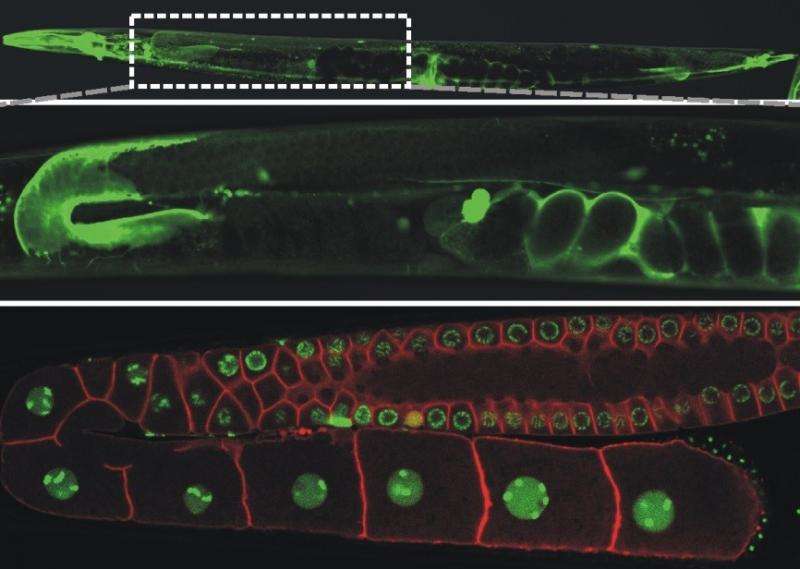A radical signal to the progeny

In biology, free radicals are often regarded as the source of all evil and the major cause of molecular damage and aging. However, free radicals are indispensable as signaling molecules governing important functions in the body. Sasha De Henau, a researcher at the Biology Department of Ghent University in Belgium recently discovered a globin protein in the roundworm model Caenorhabditis elegans that is able to generate such free radical signals.
The best known globin is hemoglobin, functioning as an oxygen transporter in our blood, giving its red color. Together with his colleagues at the universities of Antwerp, Genova and Milano, dr. De Henau found that the worm globin has no such transport function as it is solidly linked to the plasma membrane where it donates electrons to oxygen, converting it to the free radical superoxide. This process occurs in the tissue surrounding the reproductive cells.
A specific enzyme converts this superoxide into hydrogen peroxide, the aggressive compound that we use for wound disinfection and bleaching of teeth and hair. In the worm, only harmless concentrations of hydrogen peroxide are generated and this process occurs at different rates at both sides of the plasma membrane. This establishes a hydrogen peroxide gradient over the membrane that regulates the generation of reproductive cells. This free radical signal is absolutely required as genetic knockdown of the new globin results in sterility of the animal. This study is the first to recognize a globin as a free radical generator and also the signaling hydrogen peroxide gradient over the plasma membrane is a new concept to biology. Do humans also use special globines for intercellular communication? This is likely, as recently discovered human globins appear to be involved in cell signaling rather than oxygen transport. Maybe these human globins are also free radical generators using the same biological principles.
It is very likely that more unexpected globin discoveries will be made in this 1-mm worm as its genome encodes a staggering 33 globins, the majority of which the function is still enigmatic.
More information: Sasha De Henau et al. A redox signalling globin is essential for reproduction in Caenorhabditis elegans, Nature Communications (2015). DOI: 10.1038/ncomms9782
Journal information: Nature Communications
Provided by Ghent University



















